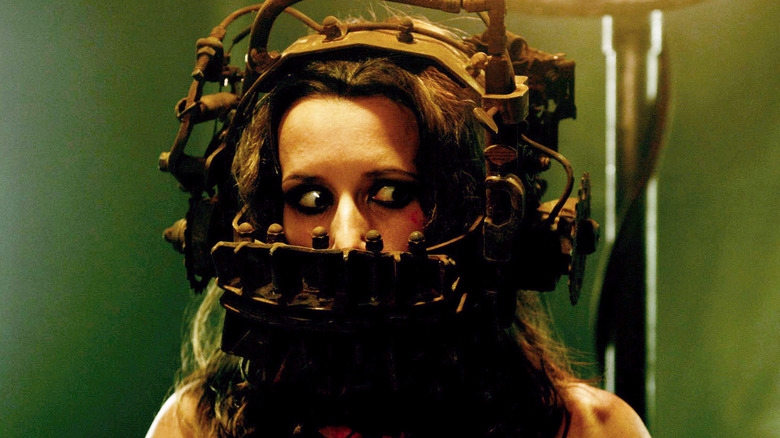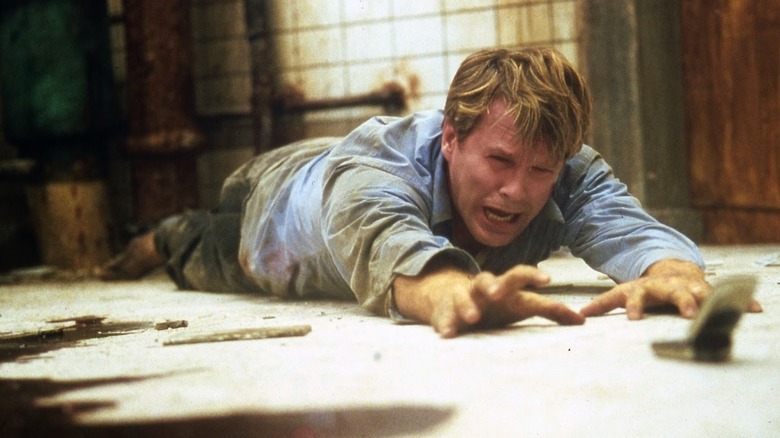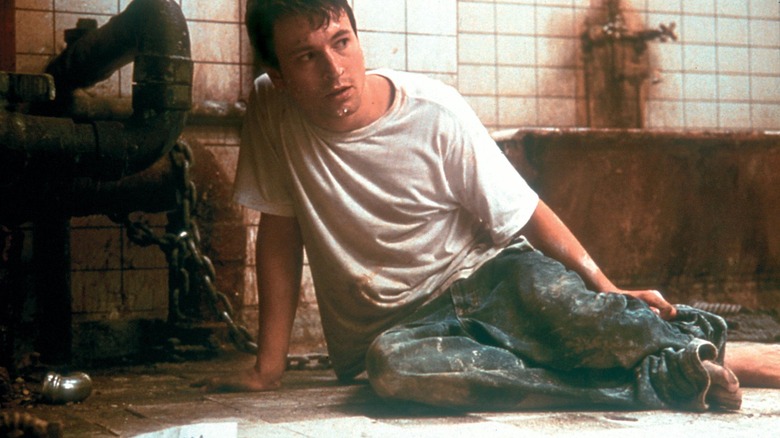
One can trace the origins of the notoriously named "torture porn" subgenre to the early 2000s, and likely connect it directly to the events of September 11, 2001. Prior to 2001, during the Clinton administration, one can see horror movies moving through an intensely creative phase. Slashers were at an end, and there didn't seem to be a dominant trend to define the decade, leading to interesting, more thoughtful horror movies. This was the decade of "In the Mouth of Madness," "Bram Stoker's Dracula," "Wolf," and "Jacob's Ladder." It wouldn't be until Wes Craven made "Scream" in 1996 that a self-aware revival of slashers would flood the market. Horror was snarky and playful and deconstructionist.
By 2004, however, the mood had changed. Having witnessed too much real-life violence on 9/11, America's subsequent torture of prisoners (pictures of torture were leaked to the public in 2002), and the earlier tragedy of Columbine high school shooting in 1999, audiences were in no mood to for "fun" bloodshed. That was reflected in the movie "Saw," a dour, mechanical film about victims who were wired into painful death traps, or who were entreated to saw off their own feet to escape a room.
"Saw" was followed by a decade-long spate of grimy, painful, downbeat dramas that featured victims being slowly tortured and dying. Films like "Hostel," "Captivity," "Chaos," and "Wolf Creek." Said films rarely featured any kind of catharsis, typically skewing toward nihilism and pain as their own ends. Very occasionally, the torture would be an act of revenge, as in the remakes of "Last House on the Left" or "I Spit on Your Grave."
Suffering was the point.
Torture Porn As A Genre

With suffering being the point, some pundits dubbed the trend of torture-centric films "torture porn." The name was meant to signify that, like pornography, audiences are not necessarily tuning in for story, character, or themes. The films exist only for an immediate, intense visceral reaction. In the case of porn, it was arousal. In the case of torture porn, it was agony.
May cite director James Wan's 2004 film "Saw" as the film that kicked off the subgenre in earnest. Looking back, this may be an odd claim, give how convoluted and plot-driven screenwriter Leigh Whannell's script actually is. "Saw" features elements of pain and torture, and pointedly eschews a happy ending, but is also about a labyrinthine web of conspiracies, revenge, and flashbacks within flashbacks. It might be more accurately described as a particularly brutal film noir. "Saw" was a massive hit and spawned annual sequels every October for seven straight years. Later on, "Jigsaw" and "Spiral" were added to the canon.
In a 2014 interview with Collider, Wan and Whannell talked about how "Saw," with a decade of retrospect, was given a bum rap. While they admitted many of the film's sequels became increasingly painful for their characters, the first film was relatively staid and featured more scenes of extended exposition. As Whannell said:
"It's a thriller. It's two guys desperate to get out of this room and every now and then we cut outside the room to show you what this bad guy is up to."
I wouldn't be until "Saw III" that someone nearly drowns in a vat of liquefied, fetid pig entrails.
'It's So Minimal'

Wan also discussed the reputation "Saw" had in 2014 with critic Brian Collins, the writer behind the 'blog Horror Movie a Day and author of several books on horror movies. The author and the director came to a similar consensus that the original "Saw" was, compared to later films in the genre, incredibly uneventful and talky. It's worth noting that the "Saw" series not only got more and more violent as the series progressed, but also incredibly convoluted. Keeping track of the "Saw" timeline is a massive undertaking, as some films take place over the same timeframe and others flash back prior to the first. Prior to the building of that massive, interconnected story, "Saw" was a humble tale of people sawing off their own feet. Wan said:
"It's really interesting. Brian Collins and I had this conversation recently where the movie in some places plays like a drama. The characters sit around and they actually chat. And Brian pointed out to me that, compared to the sequels, it's a very minimal film. And it actually is. When I go back to it, it's so minimal."
Whannell then openly objected to "Saw" even being regarded as torture porn, pointing out that:
"[T]he film got that label from the sequels as they got more and more gory ... It's hard for me to have any annoyance when thinking about the word "torture porn." When I think of it, I think about our movie and our dreams coming true."
Wan pointed out that the gore was, in fact, kept to a minimum on "Saw" as they didn't have the budget to afford anything too extreme.
Regardless of genre, the "Saw" movies were massively successful and were, for many, a Halloween institution. "Saw X" is currently in development.
Read this next: Horror Movies That Even Horror Fans Could Hardly Finish
The post James Wan And Leigh Whannell Don't See The Original Saw As 'Torture Porn' appeared first on /Film.
0 Comments